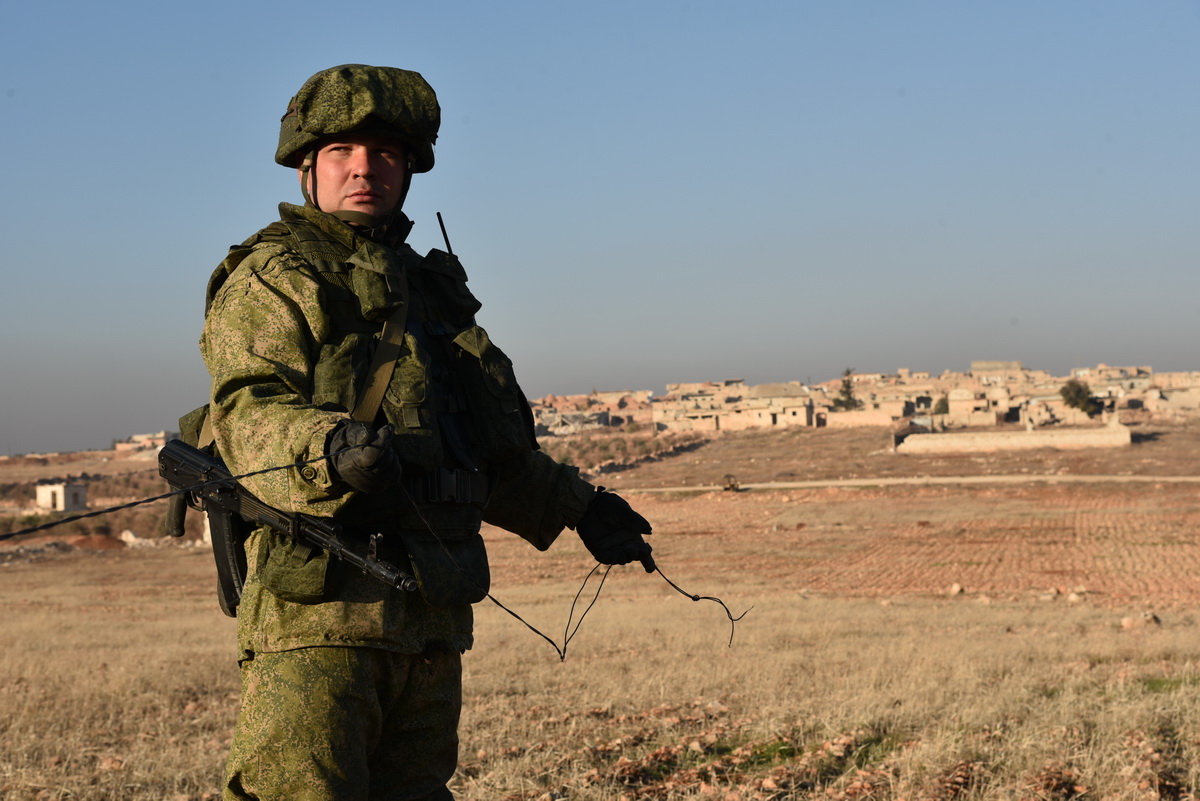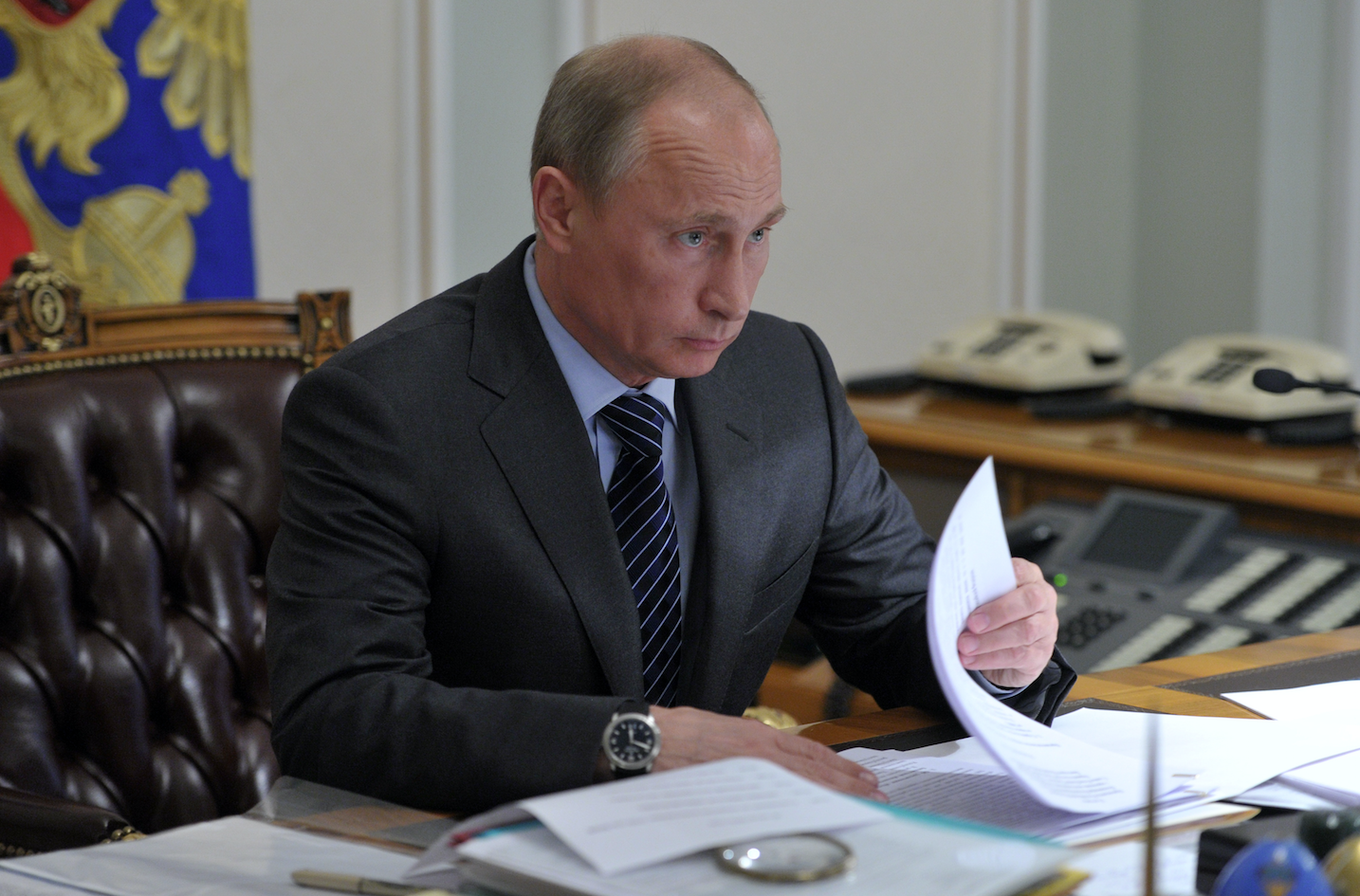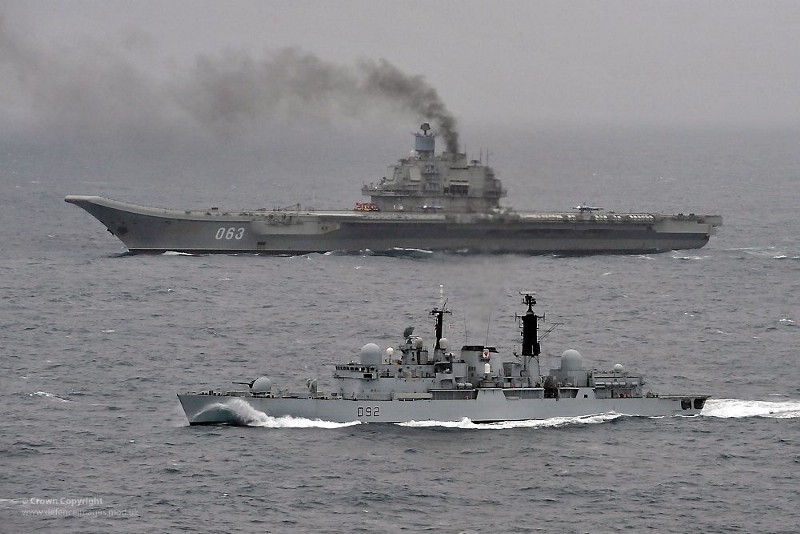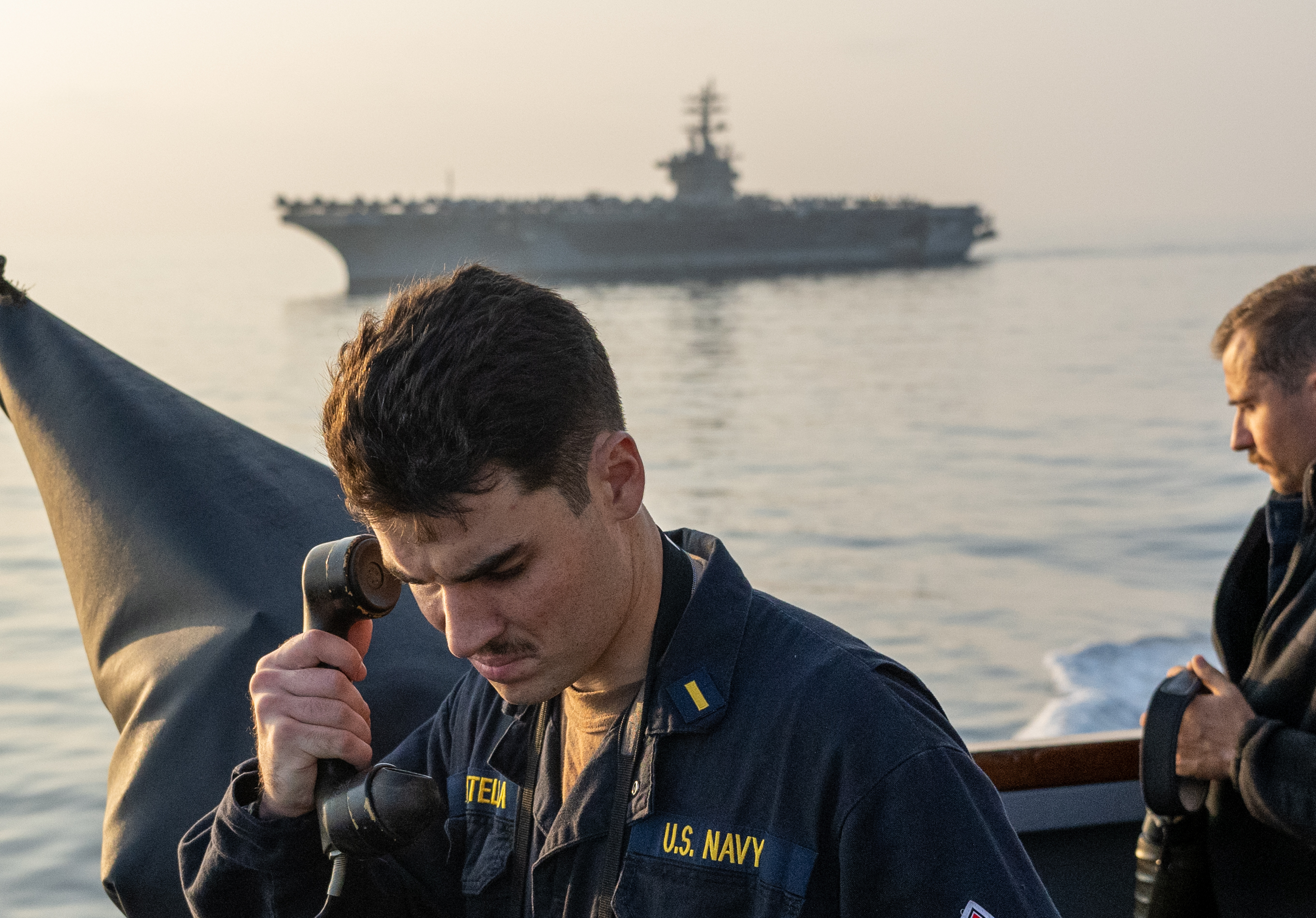
While the Kremlin’s newly professionalized military is armed with top-of-the-line ship-launched cruise missiles, flying more capable strike aircraft and firing precision munitions Russia, “does not have the ability to sustain forces far from the border,” a military expert said on Wednesday.
“Syria pushed Russian logistics to its limits,” Anton Lavrov, a visiting fellow at the Center for Strategic and International Studies and affiliated with the Center for Analysis and Technologies in Moscow, said.
Moscow’s logistical trouble in Syria to maintain the 5,000 personnel, helicopters and aircraft illustrate one of the serious shortfalls in President Vladimir Putin’s drive to pull Russia’s conventional and nuclear forces out of their post-Soviet decay.
“Russia doesn’t have the capability to sustain 20,000” troops in continuous operations far from its borders for any length of time. Even getting there is a challenge — from pier to pier, Lavrov said. The Kremlin had to buy old Black Sea merchant ships in Crimea and convert them into transports to move the soldiers and equipment including large trucks and heavy artillery, to its base in Syria and ports under the control of President Bashar al-Assad.
And that was for movement into an uncontested area at the water’s edge.
Moscow has not invested in amphibious assault in its current modernization program.

While noting the effectiveness of the ship-launched cruise missile strikes in how naval forces are being modernized and used in Syria, he contrasted their performance with that of the aircraft carrier Admiral Kuznetsov on its problem-plagued deployment to the Mediterranean. Lavrov said Moscow’s “Blue Water Navy” is smaller now than it was 10 years ago, and it “will not be better [or larger] in the mid or long term.”
Russia’s naval shipyards, largely operating in ways similar to the Soviet-era, are struggling to complete large overhaul projects of the existing surface fleet, much less build modern warships. As a result of that and tightening budgets, Russia has scrapped earlier plans to build nuclear-power cruisers and destroyers. They were to be proof of its return as a global naval power.
“It’s much more realistic” to invest in smaller ships and submarines, essentially a “Green Water Navy,” Lavrov said. It is “more able to defend the country.” In addition to precision strike and naval aircraft, that’s where naval funds are going.
That investment strategy also figures into its air defense spending, concentrating on cruise and ballistic missile threats from North Korea, Iran and eastern European neighbors, he added.
While lacking the ability project power over great distances, the analyst saw no inclination among Kremlin leaders they want to abandon their naval base in Syria. In that regard, “Syria is an anomaly.” That base is a clear demonstration of power projection, “maybe not in Europe, but the Middle East, Iraq, the Persian Gulf “where it wants influence.” And that’s why Russia is interested in Syria” as a site for a naval base.
Syria also has presented the Russians with a unique opportunity to assess American tactics, performance and equipment. “The Russian military can learn much … about Western capabilities and experience” in combat similar to theirs.
Lavrov said the Russian public, like the American, “don’t want high casualties” in the Kremlin’s interventions even in the “near abroad,” like Ukraine and Georgia, and most certainly further from their borders like Syria. Russians have been engaged in the Syrian civil war for almost three years.
They want its military leaders “to use technical superiority to fight” over putting “boots on the ground” or, when needed, use proxies for ground combat over committing Russian troops. “Russian leaders must hear the people,” he added.

Lavrov said most of the modernization effort has been poured into defending Russian frontiers and moving away from a conscript military. “Russia fears invasion across the border from any coalition of forces.” He dismissed the idea that Kremlin planning and force positioning is such that it aims at capturing the Baltic nations in a matter of days if war broke out. Likewise, because the armed forces don’t train on using tactical nuclear weapons in a crisis, including its latest large-scale exercise, he doubted whether they figure highly in Russia’s military planning. “It is something for worst case scenario.”
In addition to the strategic nuclear forces, defense spending has been funneled into the army. Its contract soldiers — volunteers rather than draftees — are paid more than conscripts and bring a more professional tone to the ranks. Historically, Russia has looked to its army as the nation’s primary defense. “Ground forces still need to control territory [and they] need equipment,” and that’s where investment has gone under Putin and will continue to go, he said.
Lavrov said the impact of sanctions following the taking of Crimea and backing separatists in Ukraine first meant to modernize that former Soviet research and development projects that were feasible got the go ahead. Now after fielding them, like the precision munitions used in Syria, the Russians are looking at what will be the new tanks, fighting vehicles, armored personnel carriers, long-range drones with strike capabilities and laser-protection systems that they will need in the future.
To sustain the modernization effort and professionalization of the officer corps and ranks under those conditions, Russia needs to “scrap some programs.” Seventy percent of its announced defense budget goes to equipment, he added.





